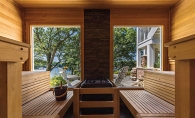People who live near Lake Minnetonka might not realize just how unique a resource it really is. “It has destination boating, offers water recreation and you can be 20 minutes from your downtown office,” says Woody Love, Realtor and sales manager with Coldwell Banker Burnet.
But lake-area homes can have disadvantages. Since many parts of the area were divided from farmland or old campgrounds, lots are often what Love calls “kiddywampus.” Plus, people who want to purchase lakeshore property often have very different expectations, so meeting those expectations and downplaying your property’s drawbacks is important in effectively selling your home, even if it could be considered coveted lakeshore property.
Tip No. 1: Play up the lake
Determining the specifics about the lake in your backyard is simple but important advice. What’s on the bottom of the lake? Does it have a sandy or organic bottom? Does it have a natural or stone shoreline?
Next, look at where the home is positioned on the lake. If your home is facing west, play up the beautiful sunsets viewable from your window. If your home is on the northwest part of the lake, determine how protected a boat could be from approaching storms. Play up why the location of your home and why the home would be a desirable asset on that part of the lake.
Then showcase the water itself. Mention not only the water quality but also the depth of water at the end of the dock; how much water determines what kind of boat people can use there. “There’s an old axiom, ‘If you can’t fix it, feature it,’ ” Love says. The lake’s specifics could be exactly what a buyer wants in lakeshore property.
Tip No. 2: Keep the inside clear of clutter
After 15 years of living in the same house in Minnetrista, Jon and RuthAnn Weiss wanted to downsize. “We are both retired and we spend our winters in Arizona,” RuthAnn Weiss says. “Our house was just too big for two people.” The couple hosted an open house and met real estate agent JoAnn Campbell. A few weeks later, they met with Campbell to have her stage their home.
Campbell enjoyed decorating her own houses so much that she ventured into professional home staging after a career as a special education teacher. But don’t confuse staging with interior decorating. “When decorating, you are creating a comfortable, perfect environment for the owner’s daily living,” Campbell says. “Staging is setting the stage for potential buyers to see a specific use for each room of the property and envision themselves living there.” Campbell adds that a home can be beautifully decorated for the owner yet still needs help being staged to sell.
With her company, Cedarleaf Home Staging, Campbell averages four to 10 hours at a home, recommending changes like artwork, paint color, light fixtures or even suggesting new appliances. Often, Campbell’s approach gives the home the lift it needs to attract a buyer. “The biggest mistake owners make in staging is keeping the house just like they like it,” Campbell says. “Depersonalizing is not easy but it’s essential, because the goal is for the buyer to see themselves in the house.”
Tip No. 3: If no one sees it, no one buys it
After you spend money staging your home, you’ve got to get people to see it. Kilb Norgaard, a Realtor with Re/Max Results in Wayzata, says there are three ways to market a house: through still photos, virtual tours or a narrated video. In today’s market, it’s important that each way is viewable on Apple products and smartphones.
Norgaard is having success making narrated videos to showcase properties. The videos tell the story about the property, detailing location, nearby watersports and the assets of the home. “My videos are 100 percent house, so people really get a feel for the space,” he says. “You can then promote it on YouTube, Facebook, LinkedIn or Twitter.”
The key is sparking interest in your property so people want to see it. Norgaard suggests that the narrated video, virtual tour or pictures showcase what you love about the lake. “A better production makes you want to drive by or call,” he says.









